
Businesses with fleets need a way to track their teams. Without fleet monitoring, you could miss critical bottlenecks or waste mileage. If you want to compete with the 940,000 private fleets running in the U.S., you need an accurate, innovative solution to monitor your vehicles.
Fleet visibility systems offer more than Global Positioning System (GPS) dots on the map. They can deliver measurable returns through cost savings, improved safety and optimized movements. Use this fleet management system guide to help you find the best solution for your business.
We’ll help you learn how to choose a fleet tracking system and provide tips on handling challenges along the way.
Fleet tracking is when companies use GPS technology to monitor vehicle location, status and performance. Fleet managers can monitor vehicle and route efficiency while watching driver safety. These tools provide insights into driver behavior, traffic and vehicle conditions.
Vehicle managers can analyze truck performance and identify potential slowdowns. This real-time data facilitates identifying inefficiencies and measuring improvements.
A truck tracking system makes monitoring vehicle movement fast and easy. It includes hardware, cloud-based software and a dashboard interface for viewing relevant fleet data. A visibility system might be passive or real time, depending on your budget and needs:
Fleet tracking software is the hub where all this data gets interpreted and visualized. The software might alert managers to speeding, unauthorized vehicle use, upcoming service and late departures. Companies can enjoy an all-in-one solution for their vehicle management needs.
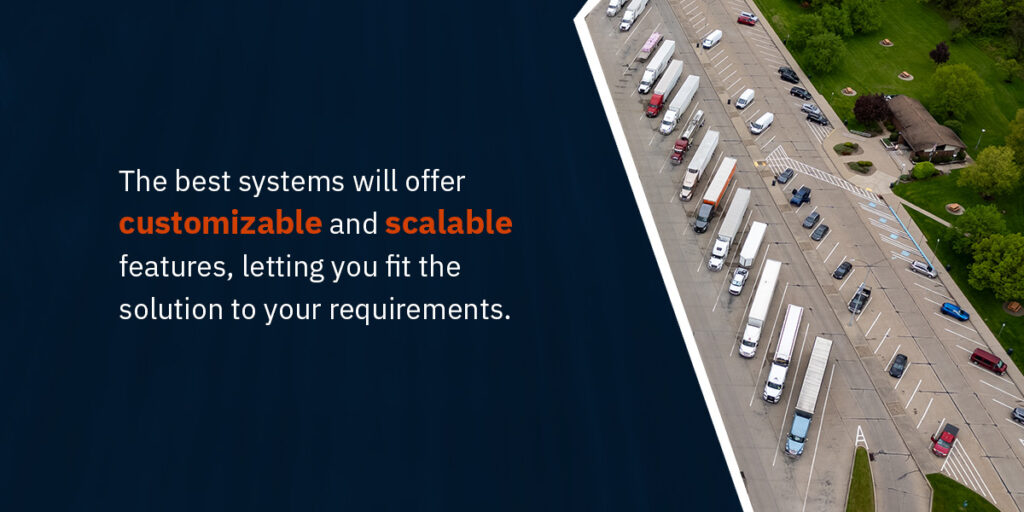
The best systems will offer customizable and scalable features, letting you fit the solution to your requirements.
Fleet management technology gives you detailed insights into truck use so you can reduce costs and meet rising demand. Explore the key advantages of utilizing these solutions below:
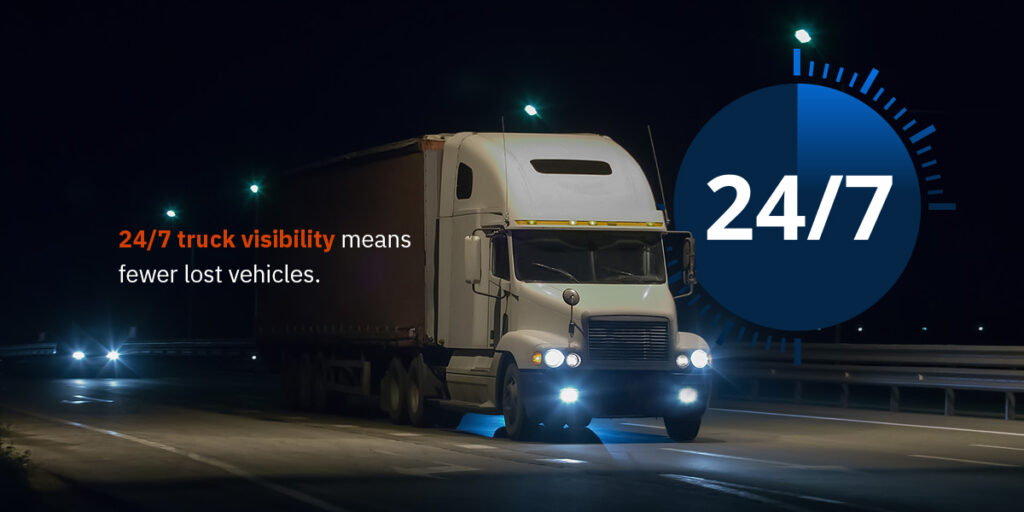
Understanding your unique needs is Part of choosing a vehicle tracking system. No two operations are the same, and the right solution should fit operational goals and industry demands. Take these needs into account before diving into a software solution:
The number of vehicles in a fleet affects the type of solution you need. A small business with only five service vans might prioritize affordable fleet tracking. Meanwhile, a business with 500 trucks often needs scalable features, custom reporting tools and multi-user access. The larger your organization, the more complex the monitoring tools will likely be.
Fleet monitoring is industry-specific, so assess the requirements of your sector. For example, field service and heating, ventilation and air conditioning (HVAC) companies focus on dispatching and customer updates. Delivery trucks need route optimization and proof-of-delivery features. Transportation groups require strict HOS monitoring and driver performance metrics.
Consider the industry pain points in your current fleet management solutions when shopping for vehicle support services.
Fleet visibility provides a good return on investment (ROI) when it doesn’t require a complete operational overhaul. Monitoring solutions should integrate with the tools you already use.

Any dispatch platforms, payroll software, maintenance databases or customer management software need to be compatible to avoid paying for entirely new systems. Seamless integrations mean fewer data silos, faster workflows and better departmental results.
If your trucks fall under Federal Motor Carrier Safety Administration (FMCSA) regulations, you’ll need software with ELD support. Commercial drivers must have ELDs registered with the FMCSA.
You might also want systems that make Driver Vehicle Inspection Reports (DVIRs) more straightforward after a day on the road. Not all systems offer compliant features. Choose a provider that works with your reporting requirements.
Commercial vehicles must follow government regulations for emissions and air pollution. Fuel waste is a major contributor to these emissions. Over-idling, inefficient routing and poor driving behavior contribute to unsustainable driving operations.
Tracking systems can help teams meet their sustainable driving goals. Use real-time visibility to find the most fuel-efficient driving paths, reducing fuel use. Meanwhile, idle alerts and driver behavior monitoring can identify habits like harsh braking and speeding that waste fuel.
Small behavior changes and increased maintenance servicing can lead to measurable reductions in fuel use and emissions.
Next, evaluate the most important features of a tracking system to support your specific fleet management and optimization needs. Not every solution offers the same capabilities.
Here’s a fleet tracking guide highlighting the most critical features for consideration:
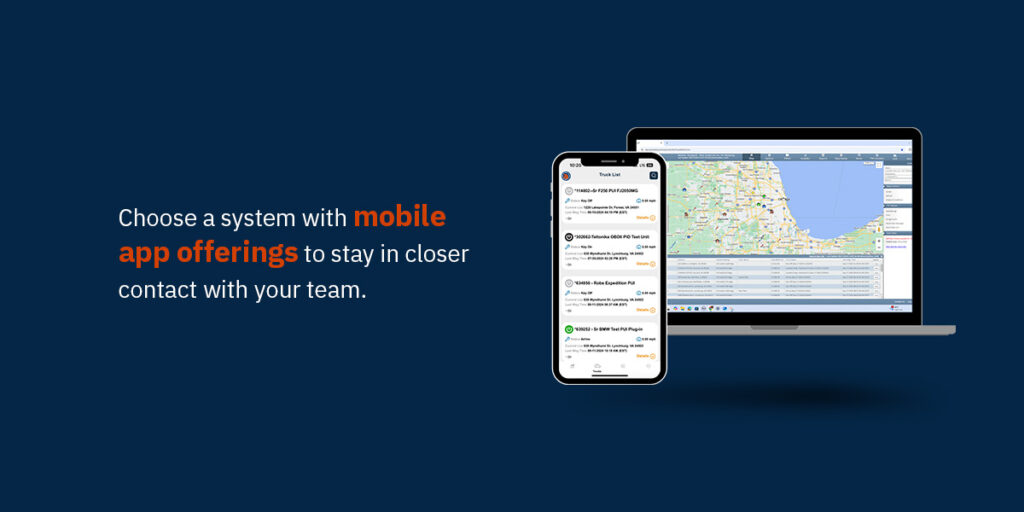
Adding fleet dash cameras to your tracking system boosts safety and accountability. While GPS data tells you where a vehicle is, video telematics shows you what’s actually happening on the road. This data is critical for reducing liability and correcting driver habits.
Dashcams keep businesses from bearing the responsibility for accidents. Road accident liability often relies on eyewitness accounts and scene evidence. Drivers with dashboard cameras can prove they were driving safely, which helps with insurance claims.
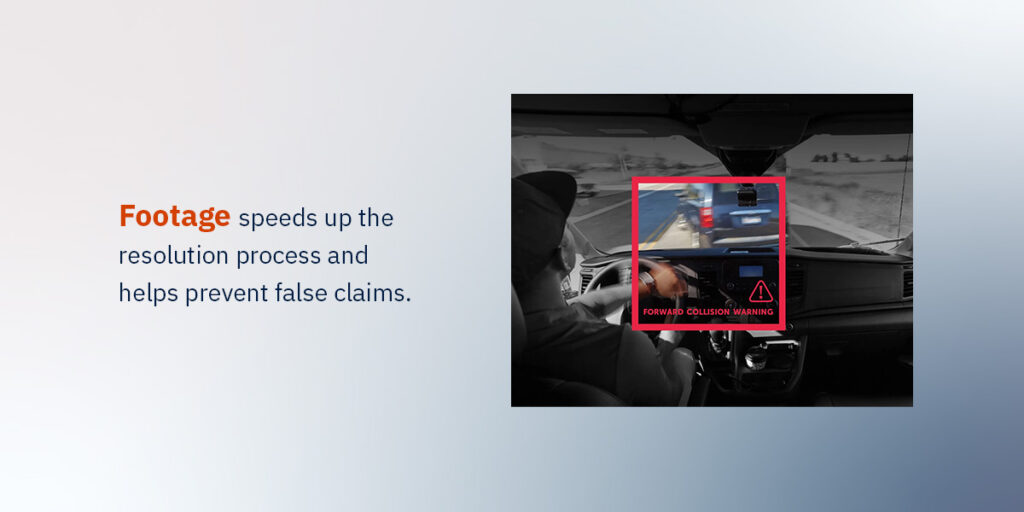
Footage speeds up the resolution process and helps prevent false claims. This reduces legal issues and accident claim costs for fleet managers.
Camera systems can go beyond recording. Many now feature artificial intelligence (AI)-powered tools that detect phone use, distracted driving, tailgating and lane drifting. These systems send drivers real-time alerts so they can correct risky behavior at the source.
Managers can monitor alerts to spot driver behavior patterns, allowing them to implement corrections or good driving initiatives to help keep everyone safer.
Dashcam systems also have essential factors to consider. With so much video technology available, ensure you are balancing truck needs with your budget. Consider the following:
Non-cloud systems are cheaper but lack the instant upload and retrieval of cloud solutions. Integration matters, too. The best systems combine video with GPS and telematics data, syncing footage with time stamps, location and driver. This gives you a full picture of any event and simplifies documentation.
Now that you understand pain points and available oversight features, it’s time to explore an in-depth fleet tracking comparison. The wrong solution can lead to wasted time and money. Make the most of the technology available with these points.
Cloud-based platforms are the latest options dominating the market.
Instead of being hosted on an on-site server, cloud-based systems use the internet to transmit data and applications. The vendor offers cloud access, which is hosted on a remote server.
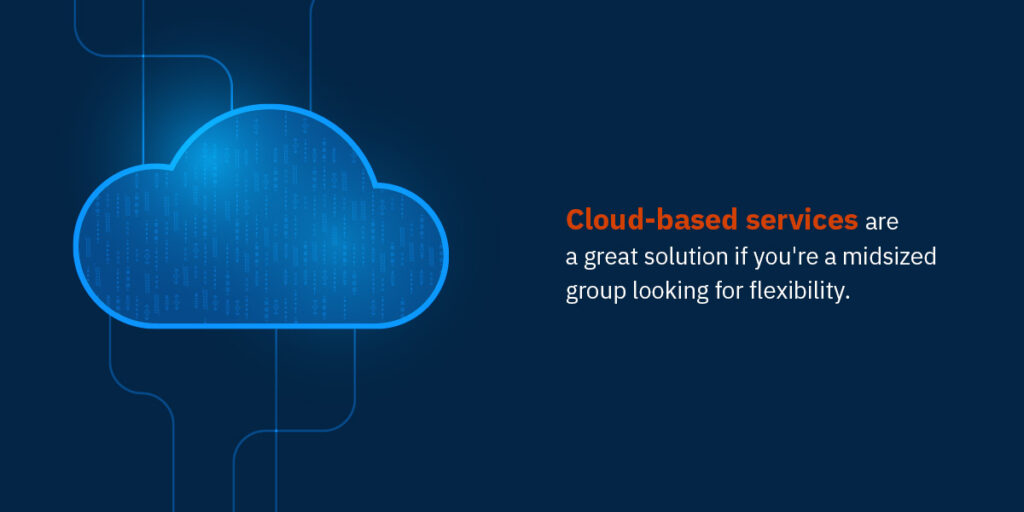
With the system connected to the cloud, you can access information, implement updates and scale as needed without expanding physical hardware. Cloud-based services are a great solution if you’re a midsized group looking for flexibility.
On-premise might seem easier to manage if your company is larger, with its own IT controls and department. However, these solutions often come with drawbacks, including higher expenses and scalability challenges.
Ensure you’re breaking down your budget and feature requirements. Pricing will vary based on:
Look at different plans carefully. Some vendors offer month-to-month plans, while others require annual commitments. Fleet tracking ROI depends on features, results and price.
Make sure you’re calculating the long-term cost of purchase and integration. The month-to-month upfront cost might look more appealing, but a yearly contract could help you lock in an overall lower rate.
Setting up and learning a new system takes time, slowing down productivity before you learn the ropes. Look for vendors with reliable customer support.
Assistance during setup and troubleshooting can get teams up and running faster, so you can start seeing benefits sooner. Offerings like onboarding services and training materials help ensure everyone is on the same page.
Quality, reliable GPSs are a must. Ask about the compatibility of new hardware with your current vehicles. How easy is the installation? Does the system support hardwired units or plug-and-play options?

Make sure you’re choosing a solution built to withstand commercial vehicle routes. Poor-quality or complicated hardware can lead to visibility gaps and frequent maintenance.
Your fleet might grow as efficiency improves. Pick a system that will scale with your needs.
Perks like flexible plans and clear upgrade options make managing vehicles easier. Add-on capabilities such as dashcams and maintenance modules will make integrating other features more manageable down the road.
If you’re looking to expand quickly, consider avoiding long-term contracts. You want a contract that ensures access to a scalable system.
User reviews and vendor reputation can tell you a lot about a product. Read reviews, talk to current users and test out different options. Does the vendor have any awards and industry recognition? A provider’s track record shows you what to expect from their services and products.
Businesses should partner with solutions providers that prioritize reliability, user convenience and long-term satisfaction.
Knowing how to choose a GPS tracking system means going beyond features and pricing. Your provider should be a long-term partner. Watch for red flags like vague pricing and a lack of transparency about hardware compatibility. Poor reviews or limited flexibility could be signs of future issues.
Before signing a contract, ask the following questions:
Fleet management technology evolves quickly, so pick a provider dedicated to ongoing updates and innovation. You should be able to trust and rely on the vendor you choose.
Once you have your system, it’s time for fleet tracking implementation. You need a solid plan in place to ensure everything goes smoothly. Here are the best tips for a seamless, streamlined rollout:
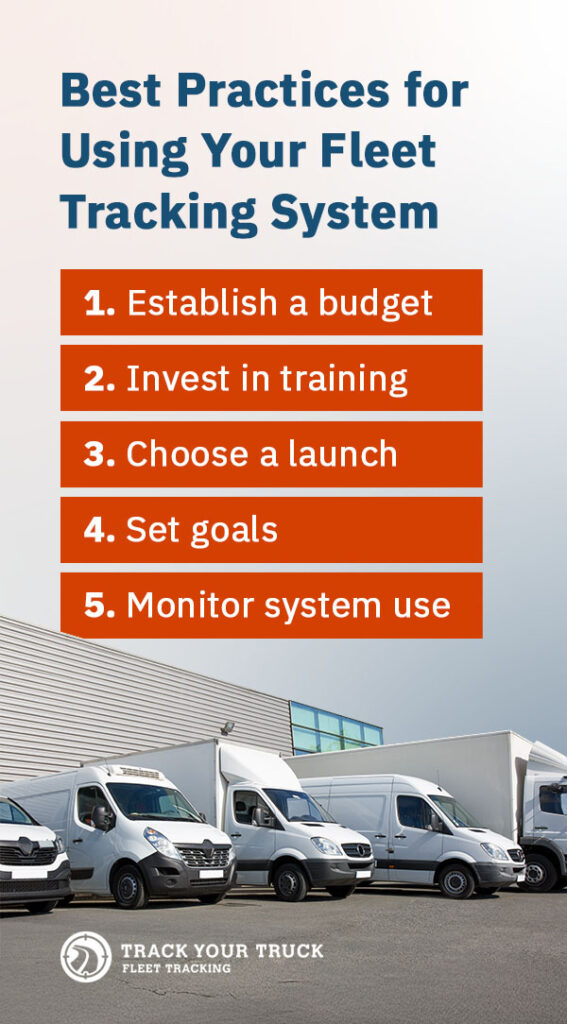
While tracking systems are a great way to improve efficiency, all change comes with challenges. Fleet managers and business owners need to be ready to address common concerns early to make software adoption successful.
Complex systems can cause friction. If a team is less tech-savvy or extremely large, make ease of use a significant factor to consider.
Look for solutions with intuitive dashboards, mobile access and simple training materials. Choose a vendor that offers support and onboarding assistance.
The easier it is to train teams on a system, the less stressful the integration will be.
Drivers might worry about constant monitoring and oversight. The key to overcoming these feelings is transparency.
Communicate what the system tracks, why you’re using it and how it benefits everyone. Make sure the technology comes across as a safety and performance tool. These systems can eventually improve morale when drivers see how they protect them and streamline their routes.
Cost is always a concern, especially for smaller businesses. Start by defining must-have features and go from there. Affordable tools often offer flexible pricing and add-ons, so you can easily fit the service to your needs while considering the long-term cost savings.
Another concern is driver resistance. New technology can seem like extra work or a sign of mistrust in the team. Engage drivers early. Involve them in pilot programs and get their feedback during rollouts. Provide thorough training to increase driver confidence. The more involved your team is, the less resistance you’ll encounter.
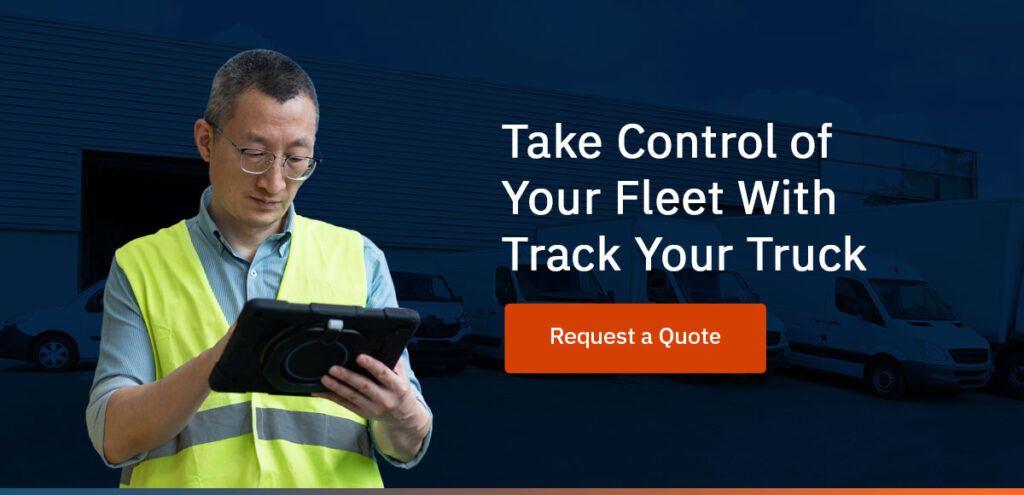
Choosing the right fleet visibility system isn’t just about features — it’s about finding a solution that fits your business and supports your team. Track Your Truck offers fleet tracking software built for reliability and scalability. With real-time oversight, driver safety tools, maintenance alerts and seamless integrations, our platform gives you full visibility and control.
No matter your business size, Track Your Truck delivers the tools and support to help you drive down costs and boost efficiency. Our systems are backed by fast, U.S.-based customer service, high-quality hardware and customizable features.
Explore our fleet management software and see how we help companies like yours stay ahead.
Linked Sources: